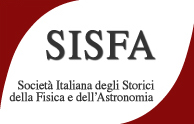Speaker
Description
Hipparcos and GAIA missions have revolutionised modern astrometry. With EDR3, GAIA allowed milli-arcsec accuracy on positions, parallaxes and proper motions for over 1 billion objects over ~15mag of dynamic range. However, GAIA offers poorer astrometry for the brightest sources (G<5). A possible way to improve the astrometric knowledge about these objects is to analyse historical astrometric catalogues with a long baseline time (>150 yr). In this framework the five Paduan Catalogues, obtained by Giovanni Santini from 1836 to 1863, can play an important role. These catalogues, one of the most important works of classical astronomy accomplished during the XIX century in Italy, collect the positions and visual magnitudes of over 10,000 stars down to magnitude 10, observed with the Starke’s Meridian Circle of the Padua Observatory.
In this talk we will describe the analysis that is being conducted on these catalogues, already praised at the time for their great precision. The first results show that the data collected by the Paduan astronomers were very accurate and could now make it possible to update the positions and proper motions of the brightest stars observed by GAIA. Furthermore, it will be possible to carry out a specific study about some stars which show variability or apparently anomalous movements from the mid-XIX century to the present.

